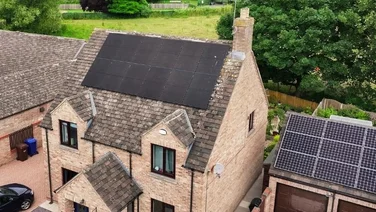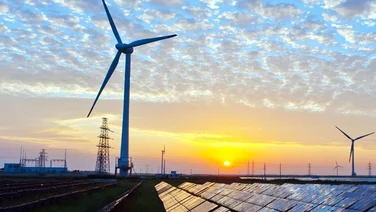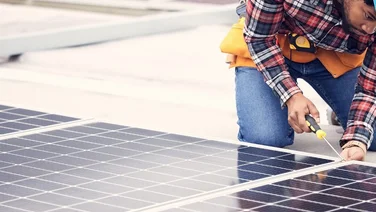- The solar farm will save up to 400,000 tonnes of carbon dioxide annually
- It is one of seven solar farms given the go ahead with a 2,900MW capacity
- The 600MW farm is expected to power 180,000 homes per year

24 NSIP solar farms are at the pre-application stage
The UK’s largest solar farm, designed to increase energy security, reduce energy bills and decrease Britain’s reliance on natural gas and volatile fossil fuel markets, has been approved by energy secretary, Ed Miliband.
The Cottam solar farm will also support regional and national targets for reducing carbon emissions to net zero by 2050.
Located between Lincolnshire and Nottinghamshire, the farm will have a capacity of 600-megawatt (MW), and will power an average of 180,000 homes annually, and is expected to save 400,000 tonnes of CO2 every year, amounting to 0.1% of the UK’s annual emissions.
Bob Psaradellis, CEO of Cottam’s developer, Island Green Power, said: “We are delighted to receive planning consent for Cottam, which demonstrates our commitment to delivering clean, reliable, and sustainable energy by working in partnership with communities, local authorities, and key stakeholders.
“The project will play a vital role in supporting the UK’s transition to a low carbon economy, generating enough clean, renewable, and secure energy to power 180,000 households annually.”
The farm will supply the grid with power using a connection previously used by the Cottam coal-fired power station, replacing a third of the original plant’s capacity. The UK’s last remaining coal fired power plant, in Ratcliffe-on-Soar, is set to close by the end of September 2024.
The project isn’t only positive in regards to solar energy, but will also significantly help biodiversity in the UK, with the creation of grassland, trees and hedgerows. It’s expected that a substantial increase in wildlife habitat will result in a biodiversity net gain of 77% for habitat and 56% for hedgerows.
Stephen Wilding, director of business development at Solar Energy UK, said: “Today’s announcement is another step in the right direction towards a sustainably-powered solar nation, offering a more secure and affordable energy system.
“It is also another welcome confirmation of the new government’s support for the solar sector, in anticipation of the forthcoming Solar Roadmap, which will set the country on the path to reaching 50 gigawatts of solar capacity by 2030.”
With a capacity of over 600MW, Cottam is a nationally significant infrastructure project (NSIP), meaning that the central government approved the build.
Miliband said: “This government is determined to give families and businesses energy security by getting off the rollercoaster of unstable international gas markets that led to increased bills. The only way to do this is to back cheap, homegrown energy, which boosts our economy and supports us in lowering bills for good.”
Another six NSIP-scale solar farms have now been given the go ahead, bringing the grand total to seven solar farms. These include Little Crow (150MW), Cleve Hill (373MW), Longfield (420MW), Mallard Pass (350MW), Gate Burton (500MW) and Sunnica (500MW). The final three were all approved just after the general election. The combined capacity comes to just under 2,900MW, or 15% of the UK’s current installed capacity.
Miliband continued: “Solar is one of the cheapest sources of power and we must take advantage of the clean and secure energy.
“Today’s decision is one of four I’ve made in the past eight weeks, which provide almost 2GW of solar, enough to power hundreds of thousands of homes.
“It builds on this week’s renewables auction, the most successful in British history. This is a government in a hurry to deliver the change it promised for the British people.”
Twenty-four other NSIP solar farms are at the pre-application stage, with decisions on Ecotricity’s Heckington Fen and Island Green Power’s West Burton project expected in the next few weeks.







